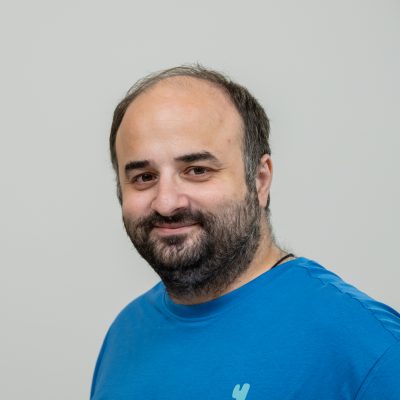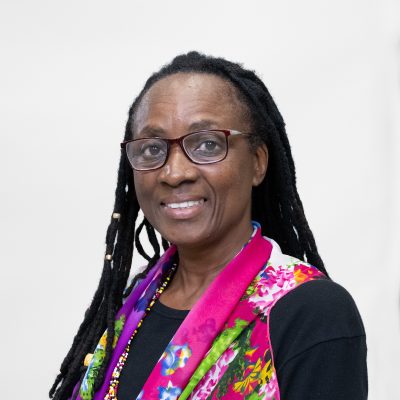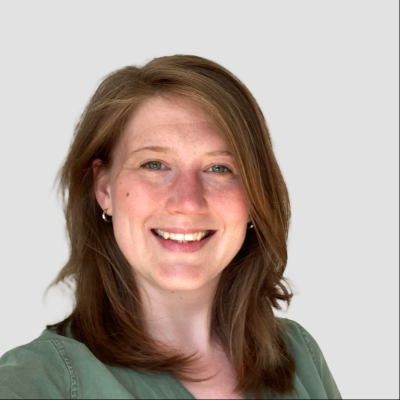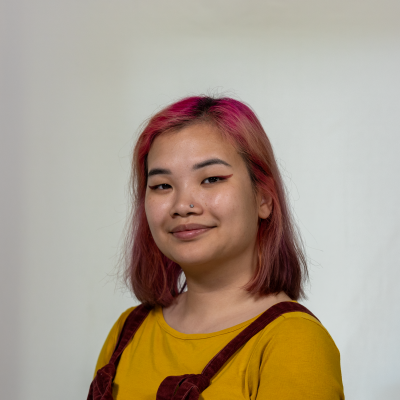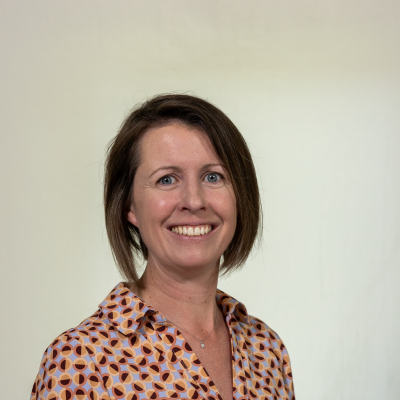Section 6: Building Inclusive School Cultures and Policies
Inclusive Curriculum Development
Nika Maglaperidze; Cynthy K. Haihambo; Lisa Marie Rosen; Penny H.C. Dinh; and Jane O'Toole
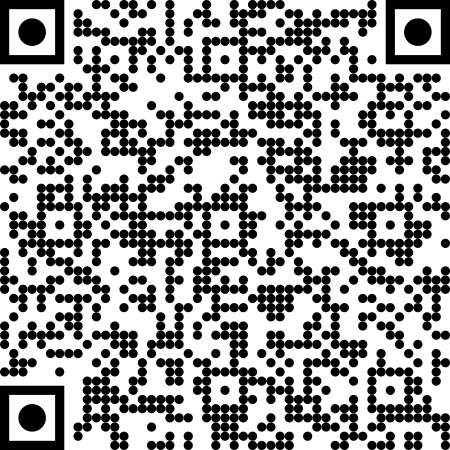 Interactive elements such as videos, podcasts, and expandable text boxes have been removed from this print version.
Interactive elements such as videos, podcasts, and expandable text boxes have been removed from this print version.To access the full interactive content, please scan the QR code to view the online version of this chapter.
Example Case
“Countries around the globe have different ways of curriculum-making for their school and higher education. In some countries, school curricula are a responsibility of committees, mostly composed of staff in the departments responsible for education. Although there could be some form of consultation with teachers, parents, and communities, the final curriculum is often centralised, and the power lies in the hands of the departments of education.
In Namibia, the prescribed or planned curriculum is mainly the responsibility of the ministry which is responsible for basic education. Basic education in Namibia is from Grade zero/ pre-primary education which is normally at the age of 6 to Grade 10, which is normally when the child is 16 years of age. This Ministry would appoint various working groups consisting of the Ministry of Education, Arts and Culture officials, subject experts and teachers serving on subject panel committees hosted by the National Institute of Education Development. These working groups hold regional consultations with community members, which often assume the form of meetings held at specified venues in the communities. Often, members of communities do not view themselves as stakeholders in curriculum making and thus do not attend. A classic example is that of the latest basic education curriculum in Namibia which was implemented in 2014. Many parents and community members started to complain about the curriculum when it reached Grade 10 and Grade 11 level, and according to the new curriculum, not all students can proceed to Grade 12 Advanced Subsidiary Level. Many parents and community members were taken by surprise because they never attended those meetings, and neither could the majority remember having been invited to these meetings. This demonstrated a gap in the process of curriculum-making as well as in communities’ agency to participate and inform the curriculum rather than taking the position of receivers of the curriculum.
The Higher Education planned curriculum-making in Namibia involves a more clearly defined process, guided by the Namibia Qualification Authority’s framework. At the beginning of the process, the higher education institutes establish curriculum review committees, which evaluate the current programmes and propose curricula transformation or review. Once these committees have drafted the proposed programmes, they share them with their stakeholders, who include but are not limited to other higher education organisations, government offices, civil society organisations, current and former students and communities. This process rarely includes students and parents. Their voices become secondary as they are represented by teachers and other adults who use an authoritarian lens (Freire, 1968) which deprives them of their democratic role to influence curriculum making through a process of co-production (Reed et al, 2023).
In addition to the planned curriculum from pre-primary to higher education, the lived curriculum plays out in the day-to-day interactions in schools, classrooms, playgrounds, cafeteria, and in communities. These are the lenses through which we see whether the curriculum is inclusive to the needs of a wide array of learners or not, and what role the stakeholders could play in making the curriculum suit their context while forging acceptance, belongingness, participation and achievement (Ainscow, 2016) across a diverse group of learners, teachers and communities.”
Initial questions
In this chapter you will find the answers to the following questions:
- What is the curriculum and how does it come about?
- What is curriculum-making?
- What does ‘inclusive’ mean in inclusive curriculum-making?
- What is inclusive curriculum-making? And what is not?
- What does inclusive curriculum-making mean in relation to the assessed curriculum?
- What are the constraints educators are experiencing in relation to the enactment of inclusive curriculum-making?
- How might educators/ teachers/ learning communities respond to these constraints?
Introduction to Topic
This Chapter discusses the meaning of the concepts: curriculum, curriculum-making and inclusive curriculum making.
What is the curriculum, and why do we need it?
The term curriculum is many things to many people (Aoki, 1984: 94)
As the quote above by the prominent curriculum scholar Ted Aoki suggests, the term “curriculum” holds diverse meanings, and a universal definition remains elusive – nor would such a definition be desirable given the complex nature of educational practice. Tracing the etymological roots of “curriculum” reveals its Latin origins in the word currere, meaning “to run the course” or “the running of the course” (Oxford English Dictionary). This etymological foundation offers an important conceptual starting point for understanding the curriculum’s fluid nature. While the traditional notion of curriculum in English and Anglo-American contexts acquired mainly organisational attributes, concerned with objectives/outcomes, vertical and horizontal integration, scope and sequence, subject content, and units (Clandinin and Connelly, 1992; Westbury, 2000;), the concept of currere reintroduces the importance of personal and subjective experience in education. We believe that this approach is crucial for inclusive curriculum making, as it recognises the diverse experiences of students and teachers alike and emphasises reflection and dialogue, key to creating a curriculum that is responsive to all. This helps us understand that curriculum is not just about what we plan to teach, it is about how students and teachers experience learning together (Pinar, 2019).
Before examining inclusive curriculum-making in detail, this chapter first explores the diverse conceptualisations of curriculum and the critical distinction between curriculum development and curriculum-making—a shift that positions teachers as active agents rather than passive ‘implementers.’ Through analysing various curriculum types and reconceptualising inclusivity beyond mere integration, we examine the potentialities and constraints of curriculum-making in addressing educational inequities. The chapter progresses from theoretical frameworks through practical implementations, culminating in strategies for organising collective action towards more democratic educational practices.
Building upon this understanding of curriculum as lived experience, curriculum scholar Ted Aoki suggests the curriculum takes on various dimensions that reflect the complexity of the educational process. We shall briefly cover these dimensions, with a focus on the enacted curriculum, which is central to inclusive curriculum-making.
Curriculum conceptualisations can be categorised under two broader categories: narrow and expansive. Narrow definitions, aligned with strict constructionist views, see the curriculum as a structured course of study with a specific scope and sequence. Expansive definitions, aligned with life experientialist views, consider the curriculum as a subjective and all-encompassing experience, shaped by the feelings, perceptions, and attitudes of individuals and groups (Ellis, 2014). This expansive view aligns closely with the concept of currere, emphasising the curriculum as a lived experience, continuously reconstructed through individual reflection and dialogue.
Under narrow definitions, we can group the planned curriculum (Porter, 2012), which encompasses the outcomes and understandings that teachers aim to achieve with their students. The taught curriculum (Glatthorn et al., 2019) refers to the way content is taught by teachers, often at the discretion of the individual teacher and regardless of its alignment with the planned curriculum. The assessed curriculum (Porter, 2012) captures the aspects of learning evaluated through diagnostic, formative, and summative assessment strategies, while the learned curriculum (ibid.) denotes what students genuinely absorb from their educational experiences.
Under expansive definitions, we can group the lived curriculum (Aoki et al., 2005), which reveals the unpredictable and complex manner in which the planned curriculum emerges within the classroom environment. The hidden curriculum (Jackson, 1990; Willis, 1997) consists of the implicit lessons imparted through the routines of school life, such as unacknowledged assumptions, tracking systems, and community discourse about schools. The null curriculum (Flinders et al., 1986) highlights the implications of omitting significant topics from the school curriculum. The experienced curriculum (Connelly and Clandinin, 1988; Dewey, 1928) represents holistic learning derived from a student’s interactions with people, materials, and the social and emotional climate they encounter throughout their education. Finally, the enacted curriculum (Snyder et al., 1992; Zumwalt, 1988) refers to the educational experiences co-constructed by students and teachers, drawing on externally mandated materials and strategies but adapted to fit the teachers’ backgrounds and the specific cultural and structural contexts of the classroom. As Popkewitz, Tabachnick, and Wehlage (1982) note, curriculum enactment isn’t just about transmitting knowledge but about understanding how “schooling modifies unanticipated and unintended consequences” shaped by ideology and context. This view highlights the teacher’s active role in continuously building educational experiences with students in a dynamic, interactive way. It has to be noted that while expansive definitions aim to include diverse student experiences, they can still perpetuate exclusion. As Nind (2005) argues, inclusive education requires more than adopting an inclusive mindset – it demands a dynamic, co-constructed curriculum that challenges entrenched power structures (more on this below).
As we can see, there are a multitude of definitions and conceptions around the curriculum, making it difficult to find a universal definition. However, Glatthorn et al. (2012) provide a framework that can be argued to be encompassing. This framework serves as a blueprint for educational experiences, articulated in documents that guide teaching practices and influence the dynamics of learning experiences. They emphasise the complex nature of education, which includes both the intended plans and the diverse ways in which these plans are experienced and interpreted by students within various educational settings. [1]
Inclusive curriculum making happens across various sites, not just in schools or ministries, but also through the work of organisations such as the Organisation for Economic Co-operation and Development (OECD), United National Educational, Scientific and Cultural Organisation (UNESCO), and the World Bank at the supra level, where transnational policies are shaped. Some of these bodies, like UNESCO, United Nations Children’s Fund (UNICEF), Global Partnership for Education (GPE) have a stronger focus on inclusive education, and actively promote it through international guidelines, frameworks, programmes and projects. At the meso-level, NGOs or government semi-autonomous agencies often work directly with schools and governments to ensure marginalised groups are included in educational policy. This broad range of actors reflects how inclusive curriculum making is a complex social practice, involving distinct roles, and priorities across different sites of curriculum making (Priestley et al., 2021).
Overall, the curriculum can be said to consist of three aspects. First, curriculum as a social practice, as it is something participated in and enacted by practitioners and other actors working collaboratively; second, it is something that happens across and within multiple sites of education systems, for instance, schools, local municipalities, NGOs, and policymakers. The third dimension concerns the structuring, sequencing, and selecting teaching content and approaches, integrating curricula, resources, and pedagogical methods to create a cohesive and inclusive learning experience for all students (ibid.).
Key aspects
The Centrality of the Teacher in Inclusive Curriculum Making
Our approach deliberately steers away from a static conception of curriculum that envisions teachers as ‘passive conduits implementing…somebody else’s curriculum product’ (Priestley et al., 2021: 2). Instead, we recognise the central role of teachers as agentic actors in the complex process of inclusive curriculum making. This perspective aligns with Clandinin and Connelly’s (1992: 323) view of the ‘teacher as the integral part of the curriculum constructed and enacted in classrooms,’ acknowledging that every school is ‘unique and that curricular needs are…largely idiosyncratic’ (Kelly, 2009: 9). However, it is crucial to understand that teacher agency in inclusive settings is not merely about individualautonomy. As Pantić (2017) argues, teacher agency is deeply embedded in socio-cultural and institutional contexts. Teachers navigate complex networks of power relations, policy mandates, and diverse student needs, which both enable and constrain their agency (Biesta et al., 2015). In the context of inclusive education, this agency becomes even more intricate, requiring teachers to move beyond thinking about ‘most’ and ‘some’ students to considering ‘all’ students (Florian & Spratt, 2013).
The professional knowledge informing teachers’ judgments in inclusive curriculum making extends beyond traditional pedagogical content knowledge (Shulman, 1987). It encompasses what Florian and Black-Hawkins (2011) term “inclusive pedagogical knowledge,” which includes not only subject matter expertise but also an understanding of how to create learning opportunities accessible to all students, regardless of their perceived differences. Moreover, the concept of “funds of knowledge” (Moll et al., 1992) highlights how teachers in inclusive settings need to recognise and leverage the diverse cultural and linguistic resources that students bring to the classroom.
Collaborative curriculum making is central to inclusive practice. This involves not just collaboration among teachers but also with students, families, and community members (Artiles & Kozleski, 2016). Such collaboration challenges traditional power dynamics and aligns with the principles of democratic education (Apple & Beane, 2007).
By implication, we’re steering away from a conception of curriculum that views education as guiding learners towards specific, predefined goals or outcomes. Traditional education, often seen as socialising and normalising individuals to fit into an existing framework of values and norms, can be problematic for inclusion. This ends-oriented model promotes certain interests and values at the expense of others, potentially marginalising those who do not conform to these predefined outcomes (Biesta, 2009; Osberg & Biesta, 2010; Slee & Allan, 2001).
Instead, we embrace a complex definition of education that rejects the notion of predefined educational ends. In this chapter, we outline a conception of an inclusive curriculum that is fundamentally open-ended and focuses on creating openings rather than reaching closures. Judgments about what emerges from the educational process are made collaboratively and continuously, supporting a democratic space where diverse possibilities are critically assessed (Osberg & Biesta, 2010). This approach has significant implications for teacher education and professional development. Preparing teachers for inclusive curriculum making requires a shift from transmissive models of teacher education to more reflexivity (Cochran-Smith & Lytle, 2009). This includes developing critical consciousness about the issues of power, privilege, and oppression in education (Gorski, 2009).
Recognising the centrality of teachers in inclusive curriculum making means acknowledging their role not just as implementers, but as key agents in a complex, collaborative, and continuously evolving process. This perspective allows for the continuous renewal of ways of being-in-the-world-with-others, making education an adaptive and inclusive practice rather than a rigid, goal-oriented process. It challenges us to rethink not only how we conceptualise curriculum but also how we prepare and support teachers in their critical role of fostering inclusive educational environments.
Reflection activity
What does ‘inclusive’ mean in inclusive curriculum-making?
As highlighted above, in this chapter, we are attempting to move away from a narrow and deterministic conception of curriculum making where teachers are seen as mere conduits of the mandated curriculum that has to be ‘delivered’ or ‘implemented’ in the classroom. We think that this kind of conception of curriculum making would also have implications as to what we mean by ‘inclusive’. Osberg and Biesta (2010) argue that curriculum and curriculum making are crucial to inclusive education because the curriculum guides the educational process. Traditional, deterministic views impose predefined norms, and this can limit inclusivity by excluding those who do not or cannot conform to these expectations. Such an understanding implies that people can only be included in a set of norms defined in advance by those who are already ‘on the inside’ who have decided what it is that is ‘normal.’
This critique of normative inclusion finds theoretical resonance in Rancière’s (1995) conceptualisation of democracy as inherently sporadic and disruptive. He argues that true democracy occurs in specific moments of disruption that challenge the established order, and these disruptions often come from outside the existing structures. Rancière helps us to see that we should understand democratic inclusion not in terms of adding more people to the existing order, but rather as a process that necessarily involves the transformation of that order itself. As long as we restrict our inclusive efforts to those who are known to be excluded, we only operate within the existing order (ibid.). This perspective suggests that achieving inclusivity in education requires similar external disruptions to challenge and transform entrenched norms and practices from the outside in. Through this reconceptualisation, we move beyond approaches to democratic inclusion that remain embedded within colonial frameworks of thought. Such frameworks perpetuate the imposition of predefined norms and hierarchies that systematically exclude diverse perspectives and lived experiences from educational spaces. The criticisms highlighted by Slee and Allan (2001) further emphasise that inclusive education has often been misappropriated by traditional special education paradigms, leading to further exclusion rather than genuine inclusivity. The current policy context, characterised by neoliberalism, marketisation, and standardised testing, often reinforces exclusionary practices. To genuinely achieve inclusive education, it is necessary to move beyond these traditional models to ensure that the curriculum is open to (or indeed inclusive of) transformations and disruptions that challenge existing power structures and knowledge hierarchies.
Defining inclusive curriculum-making is not straightforward given the various interpretations of the concept of curriculum-making, and the broad remit of the principle of inclusion both itself and in relation to curriculum-making specifically. Inclusive education can be defined as an education system and process whereby “all children in the same classrooms in the same schools” (UNICEF, 2024) learn, and where real opportunities for learners who have been previously excluded are provided (UNICEF, 2024). All learners include not only children with additional needs, but also speakers of minority languages and learners from diverse cultural backgrounds (UNICEF, 2024). Inclusive systems respect and value the contributions that learners from all backgrounds bring to the classroom and enable diverse groups “side by side to the benefit of all” (ibid).
An inclusive school, for example, may be defined as “a place where everyone belongs, is accepted, supports, and is supported by his/her peers and other members of the school community in the course of having his/her educational needs met” (Johnson, 2020: 115). At school level, a central challenge is how to build and maintain a bridge between the principle of inclusion and practices related to individual pupils as partners in a joint class or group.
UNESCO identify curricula as the “central means for enacting the principles of inclusion and equity” (2017: 19) which underlines the importance of both mandated curricula, and the process of enacting curricula by educators in terms of an avenue, process and means of prioritising inclusive practice on many levels. Johnson (2020) explores the concept a curricular approach to inclusive practice at institutional level, and identifies seven key areas of a curricular approach: (i) the pupil/s, (ii) educational intentions, (iii) educational content, (iv) methods and organisation, (v) assessment, (vi) communication and (vii) care, all of which are framed by the school’s own context (Johnson, 2020: 123) These seven aspects are concerned with the school’s inner activities; and represent the teaching-learning context and processes on a micro level, and are representative of a ‘bottom-up’ approach whereby students and their curricula are the central focus of the educators serving the school community (Johnsen, 2020). In terms of making the curriculum accessible to all, adaptation of curricula to meet the needs of individual learners which represents an established school-level approach internationally. It is argued that the cornerstone of inclusive practices at school level is based on “making, implementing and continuously revising individual educational curricula” (Johnsen, 2020: 119).
What is inclusive curriculum-making? And what is not?
Teaching is a political act. What is included in and excluded from what is taught in the classroom? And who gets to make the decisions around this?
The exclusion of Black History, the history of Africa, the Caribbean, and their diasporas, from the mainstream curriculum of the Global North is a clear example of a systematically exclusionary curriculum. This exclusionary practice in curriculum settings has been documented in several countries. For example, in 2020, in Wales, a curriculum working group set up by the government found…
“no clear evidence on the extent to which existing school curricula address issues of race and diversity (or indeed any other specific issue or theme) within history or any other subject.”
And additionally,…
“There are major gaps in the available resources which support the teaching of Black, Asian and Minority Ethnic themes across the curriculum. A review of Hwb identified only eleven resources with a black history focus, and the majority of these are considered by the Group to be outdated, lacking in supporting material for teachers, and of little relevance to Wales.”
(Welsh Government, 2020)
Similar to the History curriculum, the lack of inclusivity has also been demonstrated in other subjects. Research into the English Literature curriculum at UK secondary schools by Lit in Colour (a collaboration between the publisher Penguin Random House and the think tank Runnymede Trust) found that an overwhelming 82% of children surveyed did not recall ever studying a text by a Black, Asian or minority ethnic author (Elliot et al., 2021). Runnymede’s research into the secondary level curricula of art-based subjects at UK schools found a similar pattern:
- – “[…] Work by white artists represents 89.2 percent of mentions whereas work by minority ethnic artists represents only 10.8 per cent.
- – […] Named white artists make up 91.6 percent (1,371 mentions) of all exam board mentions but minority ethnic artists only 8.4 percent (125 mentions).
- – Only 2.3 percent of references to named, stand-alone artists are from Black or South Asian backgrounds, this is made up of 0.74 percent South Asian (11 mentions) and 1.54 percent Black (23 mentions) artists” (Begum, 2024).
These examples of the exclusion of topics within history, and the lack of diverse authors and artists taught at schools in the UK have led to urgent calls for the decolonisation of the curriculum. In its “Framework for developing an anti-racist approach” (2022), the National Education Union (UK) defines decolonisation as follows:
What does ‘decolonising education’ mean?
Writing in the Higher Education context, Leon Moosavi argues that “decolonising” the curriculum or creating a more inclusive curriculum is often understood as “trying to address the Western Centrism of teaching content by incorporating perspectives that have often been excluded because of coloniality” (Moosavi, 2023).
However, is this act of “diversifying” the curriculum with marginalised perspectives adequate in creating a truly inclusive curriculum? What happens when we simply add one or two lessons about Africa to the syllabus, leaving the entire syllabus unchanged? What if a school introduces a Black History Month where students learn and celebrate the history of Africa and its diasporas, with the rest of the year’s lesson plans remaining unchanged? Moosavi (2023) further argues, “While a mere diversification does not necessitate a decolonial shift, introducing students to scholars, theories, topics, solutions, case studies, or concepts that have been relegated to the periphery due to coloniality is a common approach to decolonising the curriculum.”
Indeed, while initiatives such as Black History Month can be helpful, tokenistic additions to an otherwise exclusionary curriculum does not make the curriculum inclusive. An inclusive curriculum is where the inclusion of marginalised knowledge and people are integral to the curriculum as day-to-day practice. If the history of Africa, Asia, and elsewhere beyond Europe is included in the curriculum as normal practice, if historical figures of Black, Asian, and Indigenous heritages are frequently introduced to learners all year round, tokenistic initiatives such as Black History Month would become redundant. These initiatives would not be needed without the systemic exclusion of marginalised voices and knowledge from the mainstream curriculum.
A truly inclusive curriculum also goes beyond diversification of topics and historical figures introduced to learners. Writing about the under coverage of race and racial diversity in the secondary school curriculum in England, Remi Joseph-Salsbury argues:
“Under a reorientation of values, schools would begin to move beyond the (important) racial diversification of school curricula, towards the implementation of an anti-racist curriculum. […]
An anti-racist curriculum would involve showing how the history of modernity is shaped by racism, coloniality and white supremacy. So, while diversity might stop at the inclusion of BME people, anti-racism would urge learners to look at the socio-political context of BME people in relation to white people…” (Joseph-Salisbury, 2020)
The same argument can be made for the discussion of other marginalised identities, and other systems of oppression in the curriculum. For example, in addition to introducing female scientists to learners, a truly inclusive science curriculum would also invite learners to critique why women are often excluded from science in the first place and explore consequences of the exclusion of women in scientific and medical research.
Making an inclusive curriculum requires the teacher to critically challenge and debunk dominant narratives in the curriculum, which cannot be done through adding marginalised voices to the curriculum alone. Writing about state-making propaganda in education in the Australian contexts, Arathi Sriprakash and colleagues argue:
“[The pedagogy of the state] brings certain histories into the present in order to secure particular futures. This pedagogical work can take multiple forms, […] in the messages relayed through public holidays and memorialisation, in public images and narratives, and in commemorations of national ‘leaders’ and dates of the past. These enter into education curricula and systems.”
In a truly inclusive curriculum, the teacher or educator would not just present propagandic narratives that glorify empires alongside a handful of marginalised voices. They would go further by recognising and critiquing the problematic nature of the dominant narrative in the curriculum.
Black Feminists such as Patricia Hill Collins have attributed exclusionary biases in the knowledge that is produced, legitimised, and taught in the curriculum, to the exclusion of marginalised and minoritised people in academic institutions. Writing in the US contexts, Hill Collins argues,
“Because elite White men control Western structures of knowledge validation, their interests pervade the themes, paradigms, and epistemologies of traditional scholarship. As a result, U.S. Black women’s experiences as well as those of women of African descent transnationally have been routinely distorted within or excluded from what counts as knowledge.”
(Hill Collins, 2014: 251)
Inclusive curriculum-making requires the teacher or educator to have an awareness of historical, social, and political contexts that produces and reproduces suppression of marginalised knowledge. Thus, one strategy for inclusive curriculum making is the involvement of and consultation with a broad range of stakeholders, including learners and their wider community. An inclusive curriculum recognises the credibility and importance of learners and their wider community in shaping knowledge, in deciding what’s important enough to be taught in the classroom.
What does inclusive curriculum-making mean in relation to the assessed curriculum?
The implementation of “child-, disability-, and gender-sensitive” and for “providing safe, non-violent, inclusive and effective learning environments” (UNESCO 2017: foreword) has been defined as the 4th Sustainable Development Goal (SDG) and taken up in national, local and institutional policies. This is just one example of how the goal of inclusion is promoted through educational policies worldwide. On the one hand, the planned curriculum defined in national policy frameworks is only a single element that shapes the students’ experiences – teacher skills and attitudes, infrastructure, pedagogical strategies and many more factors are also relevant in forming the co-constructive classroom experience (cf. UNESCO 2017: 13, see above). At the same time, both the way in which a curriculum is constructed and its interactive implementation in the classroom are powerful processes that can have a serious impact on the culture of learning and learners’ opportunities.
Bearing in mind the knowledge-forming dimension of curricula (see above), it makes sense to explore the differences between the assessed curriculum (examination (results)), grades and other documents that are supposed to quantify and document learning’ progress) and the inclusive curriculum (encompassing the dimension of in- and exclusion unfolds in relation to the lived experiences, which emerge from within, between and beyond school institutions (see above, Ainscow 2016: 148ff.)) a little further.
From a theoretical point of view, a key dimension of the inclusive variant of the curriculum may be defined as an achieved reflection of the written curriculum with regard to the diversity within the student body as well as contextual factors (ibid.).
Regarding curriculum making, as the example of decolonisation (see above) shows, inclusivity can only be triggered if the dominant discourse inscribed in curricula and teaching and learning patterns is exposed. Hence, there is a need to overcome existing hierarchies in collaborative practices. According to Baron (2018: 340), a circular and recursive mutual exchange may allow for ongoing self-critical and bias-sensitive examination of in- and exclusion dynamics at all (micro-, meso-, macro-) levels, based on trust and understanding:
“Since a conversation is not one-sided, there should not be a dominant discourse. Variety and mutual learning are valued as the curriculum and understandings surrounding the curriculum are embraced and adjusted by other worldviews” (Baron 2018: 334).
To build anti-hierarchic, “heterarchical” relations (Baron, 2018), teachers may look for significant others in their professional environments on policy, practice and relevant intermediate levels to share, exchange, discuss and adjust ideas on how to make the curriculum inclusive as communities of practice (or professional learning communities).
These professional or learning communities can seek to exchange their ideas with other groups and stakeholders in feedback-loops and, in a best-case scenario, establish a dialogical exchange between students, teachers, management and policy makers. In the sense of co-construction of agency as a highly, “situated achievement” (Priestley, Biesta & Robinson, 2014: 151), curriculum making can be carried out as an iterative, co-constructive process between teachers and pupils that can unfold and adapt in a continuous and circular way. In addition, a relational exchange can be installed at the institutional level (ibid.: 157) to promote professionalisation and further training.
With regard to curriculum enactment, the objective of critical agency, would avoid seeking a universal formula for the design or implementation of an inclusive curriculum. Regarding the objective of avoiding tokenistic addictions to a curriculum (but seek for a reorientation of values instead). As an alternative, a critical agency can be built by accounting for the high dependency on contextual conditions from which grades and learning outputs emerge. A democratic and participatory process of co-construction and reflection on forms of in- and exclusion that are caused or reinforced by the existing curriculum in the medium to long term can enable teachers to take the experiences of diverse learners and their learning needs into account. Hence, general teaching tools and standardised approaches should be reflected regarding their in- and exclusionary potential within a particular setting based on engagement with the students’ experiences. To do so, it is also necessary that teachers are given the opportunity to learn about their own potentials and limits regarding their experiences and knowledge about structural barriers and their ability to problematise existing forms of exclusion in the individual setting.
In addition, inclusive enactment of curricula may require the adjustment of standardised assessment tools or even working with alternative approaches, such as interviews and conversations, self-evaluation, logbook or diary, portfolios, etc. (Johnsen 2020: 131-2). Such individualised assessment techniques can support continuous adaptation of curriculum enactment to changing requirements in the classroom. Also, this might allow schools to start moving beyond the (important) racial diversification of school curricula, as criticised above, and thus feed back into the process of curriculum making as a form of participatory knowledge.
Regarding limits and potentials, it should be noted that many schools include the requirement to realise inclusion in their mission statements without providing support structures for teachers to put this claim into practice. Hence, the distinction between the assessed and inclusive curriculum may be diluted and developing inclusive and participatory routines may be left to the individual teachers. Responsibilitisation, however, is not the same as critical teacher agency. In responsibilisation, teachers are given sole responsibility for implementing the curriculum, thereby ignoring the institutional setting as a basic condition and the exclusionary structures that exist within it. This may lead to the fact that implementing a given curriculum in a non-exclusive way can be particularly challenging for teachers, while at the same time being put under high pressure to “perform” as in present good examination outcomes.
“Agency ,[…] is not to be understood as something that people can have; it is something that people do. It denotes ‘quality’ of the engagement of actors with temporal-relational contexts-for-action, not a quality of the actors themselves” (Priestley, Biesta & Robinson 2014: 150).
It is thus crucial to account for the difference between the inclusive and assessed curriculum to analyse inner and contextual constraints and opportunities to adjust pedagogical routines to make them more inclusive. Critical teacher agency would account for the inclusive curriculum dimension in a way that respects aspects of participation, which “relates to the quality of their experiences whilst they are there and, therefore, must incorporate the views of the learners themselves” (Ainscow 2016: 147). From a critical teacher agency point of view, “’achievement’ is about the outcomes of learning across the curriculum, not merely test or examination results“ (ibid.). It is useful for teachers to develop strategies and techniques to review the assessed curriculum for the potential of exclusion and make adjustments where necessary to move closer to an inclusive curriculum. The aim of such an approach would be to engage in a critical and practical agency, based on both the learners’ needs and contextual requirements.
What are the constraints educators experience in relation to the enactment of inclusive curriculum-making?
It is recommended to readily identify barriers to inclusion (Ainscow, 2020) as a proactive strategy to inform how educators and education systems can seek to address such constraints.
- The growth of neoliberalism at government level globally which in turn influences (inclusive) education policy.
- Curriculum overload- the weight of content and business of teaching schedule detracts from creating space to discuss and critically analyse mandated curricula at school level and explore philosophical stances such as the development of inclusive practices. In most cases, school and higher education curricula are subjected to examination-oriented assessment systems that overlook actual skills and competencies. The unfortunate outcomes of this are that educators are pushed to tick off these academic targets and, in the process, miss out on the actual humanity goals. In the delivery of the curriculum, a lot of time is spent on “learning to pass” rather than “learning to be.” Learners’ needs might not be identified or there is limited time to develop support strategies that could serve as support for a variety of learning needs. The learning experiences of these learners could be marked with loss of identity, bullying and marginalisation. These are the opposite of an ideal inclusive curriculum in which every role-player should thrive (Ainscow, 2016).
- Lack of access to and provision of continued professional development in relation to inclusive curriculum-making.
- Lack of clarity, trust and support between education partners regarding the enactment of policy at school/ institution level.
Organising for inclusive curriculum-making
This chapter has provided some suggestions for teachers to implement inclusive curriculum-making at the classroom level while also acknowledging the challenges and constraints of implementing an inclusive curriculum. One way to overcome some of these challenges is through organising and campaigning with other teachers and educators, as well as the wider community outside of educational establishments.
Writing in the context of HE, Moosavi (2023) reflected on his experience of implementing a decolonial curriculum for his module and expressed regrets over the missed opportunities in encouraging colleagues in the broader programme to examine their curriculum and pedagogy. He writes, “[I]f students only experience a decolonised curriculum in a small part of their overall studies, we may still be complicit in being part of an educational programme that is Western-centric and that we have not done enough to subvert.”
Additionally, Abu Moghli and Kadiwal (2021) have argued for the importance of institutional changes in the power structure of educational institutions, that individual inclusive curriculum practices alone cannot take place in a vacuum, detached from other symptoms of an exclusionary education system. Similarly argued by Moosavi (2023), “even better than recruiting one’s colleagues to engage in academic decolonisation, it may be better to lobby one’s university for institutional changes in implementing academic decolonisation at a more strategic level.”
Historically, teachers and educators have also worked with the wider community to campaign for inclusive curriculum practices. The establishment of Black Studies at US colleges in the Civil Rights Movement, bringing “previously excluded knowledges” (Andrews, 2018) to the HE curriculum, was a clear example of where this has happened. Chronicling the movement for Black Studies in the US, Kehinde Andrews (2018), the first professor of Black Studies in Europe writes: “Establishing Black Studies was a political act, supported by communities because it was seen as a progressive step that could improve the lives of African Americans.”
In fact, Andrews believes that community support was integral to this academic movement and that African American scholars alone could not have established Black Studies in the US.
“Black Studies spoke to so many because it set out to transform the accepted knowledge base. The movement was far more substantial than simply asking for more Black people to be hired, it insisted on recognising previously excluded knowledges.”
(Andrews, 2018)
Case study: The National Education Union and its campaigns for inclusive curriculum in the UK.
The National Education Union (NEU) is the largest trade union of workers in the education sector in the UK. The NEU represents not only qualified teachers but also those in training as well as other professions, such as teaching assistants and school support staff.
In addition to representing members in the workplace, the NEU also campaigns for issues within the sector, such as poverty, anti-racism, as well as teachers’ pay and workload. The union has consistently called for inclusive curriculum reforms in their campaigns. For example, in their manifesto leading up to the 2024 general election in the UK, the NEU demanded that the next UK government must
“Ensure the changes to the curriculum are engaging and inclusive, and that teachers have access to professional learning to embed antiracism and guarantee all pupils access to a broad range of subjects, including the arts and PE”
(NEU, 2024).
Additionally, as previously cited, the NEU has also created an anti-racism framework (2022) to support and empower members in advocating for this agenda at school, especially in creating an inclusive curriculum at school level. The framework covers anti-racism in five core themes, posing a series of questions to help guide NEU members in examining anti-racism in their practice and local school context. Under “teaching and learning”, readers of the guide were invited to reflect on the following:
“Is the curriculum being used to:
- Challenge race inequality
- Achieve cultural inclusion
- Respond to the differences in children’s lives caused by racism, poverty and discrimination?” (NEU, 2022).
In addition to the written guidance, the NEU also provides training sessions to facilitate the implementation of the framework to members’ workplaces.
Joining trade unions such as the NEU is a fantastic way for teachers and educators to advocate for inclusive curriculum making beyond the class-room – at their school and even at a national level. One single teacher cannot campaign for inclusive curricula on their own. However, when the mass collective of teachers organise for progressive curriculum reform, this objective is a lot less difficult to achieve.
Local contexts
The local contexts were contributed by authors from the respective countries and do not necessarily reflect the views of the chapter’s authors.
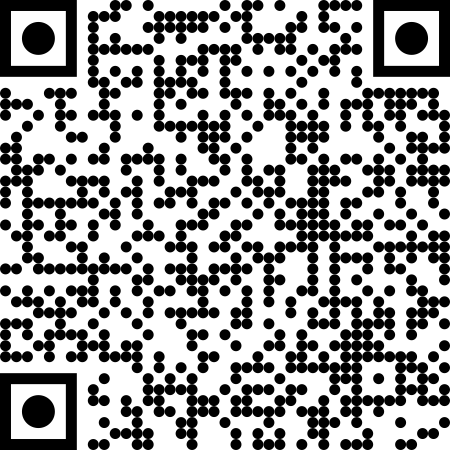 Interactive elements such as videos, podcasts, and expandable text boxes have been removed from this print version.
Interactive elements such as videos, podcasts, and expandable text boxes have been removed from this print version.To access the full interactive content, please scan the QR code to view the online version of this chapter.
Closing questions to discuss or tasks
- Are you a member of a teachers’ union?
- What is your union’s policy on inclusive curriculum?
- Have they got any campaign on inclusive curriculum making that you can take part in?
Literature
- However, it has to be added that different cultures have conceptualised curriculum in diverse ways, shaped by varying educational philosophies, societal values, and historical contexts. For more, refer to Paraskeva (2021), and Eppert & Wang, (2008). ↵
- For more comprehensive overviews of curriculum conceptualisations, the reader is advised to refer to Ellis (2014), Jung and Pinar (2016) and Short (2023). ↵
- However, it has to be added that different cultures have conceptualised curriculum in diverse ways, shaped by varying educational philosophies, societal values, and historical contexts. For more, refer to Paraskeva (2021), and Eppert & Wang, (2008). ↵

